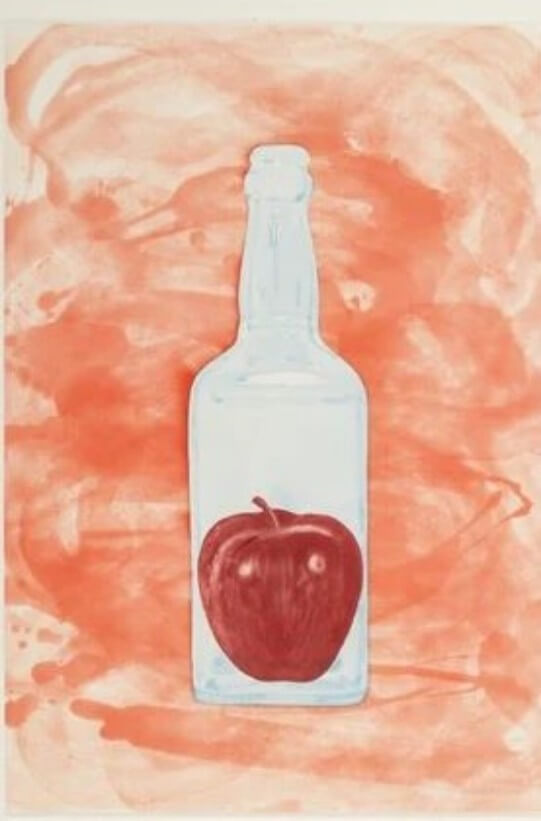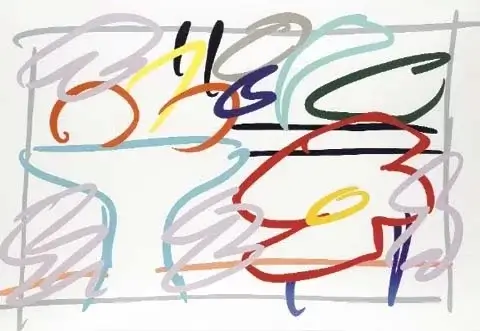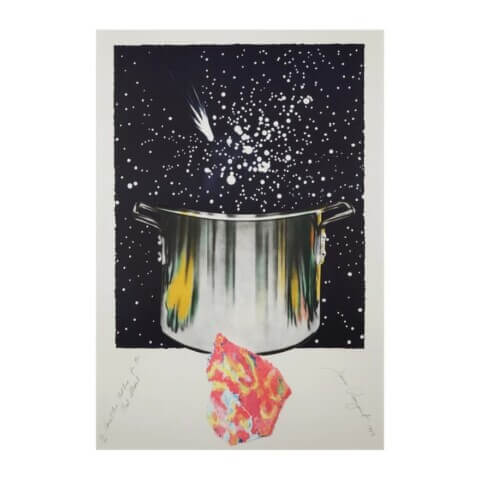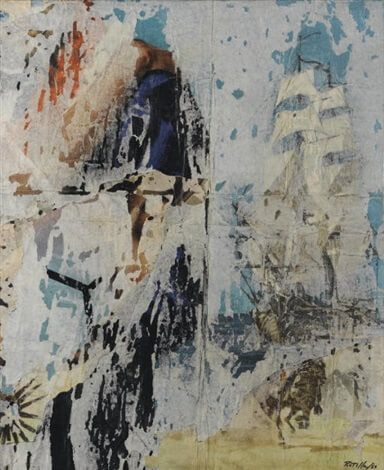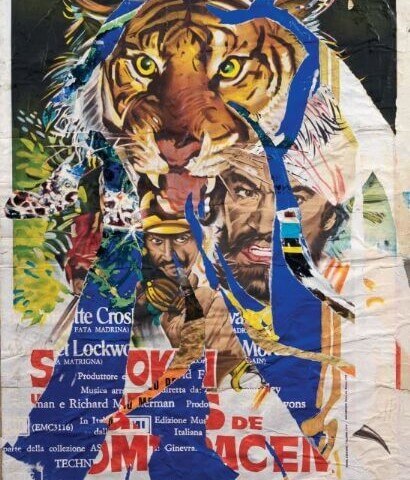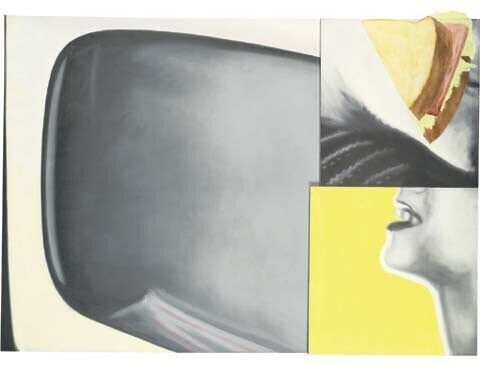Title: Exploring James Rosenquist’s “”Blood in Warm Water”” (1961)
Year Painted: 1961
James Rosenquist’s iconic painting, “”Blood in Warm Water,”” executed in 1961, remains a cornerstone of the Pop Art movement. The artwork deftly encapsulates the era’s societal shifts and cultural commentary, forging a lasting impact on the art world and beyond.
At first glance, “”Blood in Warm Water”” may seem like a juxtaposition of disparate elements – a Coca-Cola bottle, a tire, a plane crash, and a bathroom sink. However, these seemingly unrelated images converge to provoke deeper contemplation. Rosenquist’s canvas acts as a mirror, reflecting the consumerist obsessions and stark realities of the 1960s.
The presence of a Coca-Cola bottle and a tire, emblems of consumer culture, is immediate. Yet, their placement beside imagery of a plane crash and a bathroom sink elicits a visceral response. This blending of seductive consumerism with disturbing scenes raises questions about the superficiality of contemporary existence.
“”Blood in Warm Water”” captures the essence of Pop Art by synthesizing the mundane and the profound, inviting viewers to explore societal contradictions. Rosenquist’s masterful composition compels us to decipher the painting’s narrative, encouraging a dialogue about the veneer of consumer allure versus the undercurrents of societal turbulence.
The year 1961 marks a turning point in artistic expression, and “”Blood in Warm Water”” resonates as a harbinger of cultural change. It encapsulates the era’s tension between materialism and existential concerns, encapsulating the zeitgeist with striking precision.
Rosenquist’s creation is an embodiment of his ingenuity in merging diverse visual elements into a cohesive statement. It serves as a testament to his ability to distill complex concepts into accessible art, catalyzing thought and conversation.
In conclusion, James Rosenquist’s “”Blood in Warm Water”” (1961) transcends its creation year to remain an emblem of Pop Art’s ethos. By intertwining consumerist symbols with disconcerting imagery, Rosenquist crafts a painting that remains relevant in its commentary on society’s facades and realities. The artwork’s resonance and enduring significance solidify its place as an exceptional and lasting contribution to the world of art.
At our art gallery, we take pride in offering comprehensive global shipping to our esteemed clientele. We understand the significance of your art acquisitions and the need to transport them with utmost care. Hence, we are committed to delivering your chosen paintings to any address worldwide and free of any additional charge.
Our reliable courier service partners are experienced in handling precious art pieces and ensure that your painting reaches you in pristine condition. We offer fully insured, door-to-door delivery, providing you with peace of mind that your artwork is protected during transit.
Moreover, to accommodate your unique framing preferences, we offer the distinctive service of sending your purchased artwork directly to any framer across the globe. This enables you to have your painting framed locally by your trusted framer, reducing the risk of damage during transportation.
Regardless of your location or your framer’s, we strive to make the process as seamless as possible. It is our goal to provide exceptional service that caters to your needs and ensures the safe delivery of your valuable artwork.
We invite you to experience our hassle-free, worldwide shipping service, which is aimed at delivering your prized art pieces safely and efficiently, wherever you may be.
Similar paintings
Join our newsletter
Signup for our newsletter and receive our inspiration guide and 20% discount on your first order!

